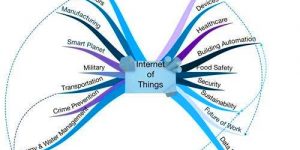Frost & Sullivan
Global instability due to terrorism and civil disruptions is leading to increased pressures among border and maritime security agencies to keep their borders safe from human, drugs, and weapons trafficking while streamlining operations to process genuine travelers. According to Frost & Sullivan?s recent analysis,?Global Border and Maritime Security Market, a high impetus on cross-border data sharing and integrated security systems is driving the need for technological solutions that act as force multipliers. Frost & Sullivan forecasts the market to grow two-fold from $19.22 billion in 2018 to reach $35.23 billion in 2028 at 6% CAGR.
?The adoption and integration of next-generation systems and technologies powered by artificial intelligence and real-time big data analytics will enable faster and more accurate threat detection, tracking, and decision making,? said?Aravind Srimoolanathan, Senior Research Analyst, Security at Frost & Sullivan. ?Robust network infrastructure and cybersecurity capabilities will be required with increasing inter-agency collaboration and cross-border data sharing.?
From a technology standpoint, Srimoolanathan predicts that multimodal biometrics for seamless security processing of travelers, tracking and identification through video analytics, and the concept of smart border management will gain prominence. Security industry consolidation and merger and acquisition activities with start-ups, which provide innovative solutions for the border security market, are also highly likely.
Key trends?creating growth opportunities in the market include:
- Airports?poised to implement advanced technologies such as video analytics, eGates, ePassports and electronic visas for streamlining passenger check-in procedures through digital identity of people. This will help increase footfall and reduce processing time with foolproof identification and tracking.
- Increased investment in the efficiency of?ports. Cybersecurity is now critical to port operations, and ensuring that operational networks are not compromised is a top priority.
- Building an integrated, comprehensive automated border management system at?land borders?through the development and testing of advanced solutions such as laser fences and adoption of innovative screening and detection equipment.
- Digitization of?coastal security?through connected assets for enhanced data-sharing capabilities to thwart intrusion scenarios.
?While border control groups may look to enhance connectivity in both domestic and international data-sharing capabilities, concerns over data privacy and risk may negatively impact the market,? noted Srimoolanathan. ?Furthermore, less developed and small countries may not have the budget to procure and operate advanced border and maritime systems and equipment to address their border security requirements and will seek flexible business models instead.?








